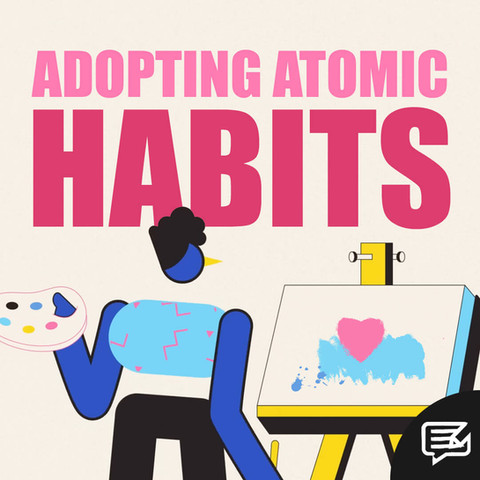
11.10.20
RESTORING FAITH
Every now and again a news article crops up that provides the world with a much-needed giggle.
In June 2020, The Guardian obliged with such a story. Entitled “Experts call for regulation after latest botched art restoration in Spain”, you’d be forgiven for thinking it sounds like a niche subject area. After all, I can’t say that Spanish artwork - or the art world is general - is something I pay much attention to. But this is no ordinary “art”. As the article title suggests, this is botched art - and boy, does it live up to its name!



But first, cast your mind back to 2012 when news of a poor restoration job made national headlines.
In the small town of Borja, Spain, an amateur named Cecilia Giménez tackled a fresco of Jesus Christ entitled “Ecce Homo” (“Behold the Man”). “Ecce Ohno” might have been a more fitting title for the wholly unrecognisable results. Poor Giménez reportedly ended up in therapy to deal with her embarrassment.
There was a rather miraculous side to the whole debacle, however. Prior to the COVID-19 pandemic, tourists had been flocking to see the “Monkey Christ” in person. Its blurry, potato-like features adorned on a multitude of mementoes usually reserved for the works of household names like Da Vinci, Van Gogh and Michelangelo.
A 2018 article from The Guardian expands:
"Between August and December 2012, 45,824 people visited the sanctuary. The numbers may have dropped off since then, but Borja still receives 16,000 visitors a year – more than four times the number who came before Giménez picked up her brushes.
"Not only has the picture’s fame provided jobs for the sanctuary-museum’s two caretakers, it also helps fund places at Borja’s care home for the elderly, a haven for those who would not otherwise be able to afford to live there."
Back in the present day, and Spanish restoration attempts prove to be the gift that keeps on giving.
This time, it was the Virgin Mary in a copy of the Immaculate Conception by baroque artist Bartolomé Esteban Murillo that was disastrously desecrated. A private art collector in Valencia was reportedly charged €1,200 by a furniture restorer (with the skillset of Mr Bean) for the privilege. I only hope he kept his receipts!
Unsurprisingly, experts were left appalled. After all, a moment of comic relief for the masses does not atone for the lasting damage done.
All of which led me to consider if technology could do a better job?
In September 2018, TechRader published an article detailing how AI can restore our forgotten past. A section entitled “Getting painterly” shines a light on how AI can help repair oil paintings, referencing a technique called “in-painting”:
"This is where cracks and other damage in a painting are differentiated from deliberate texture or brush-strokes, and then filled in to make the picture look as it would have when first painted.
"Restorers use X-rays, which reveal the different layers of paint, to do this manually. AI replicates some of the effect with machine learning.
"Let’s not let loose robots with paint brushes on any old masters just yet, but AI could also be used to reveal what a painting looked like hundreds of years ago, without the need to spend tens of thousands of dollars on restoration."
What’s more, AI has the potential to be more adept than humans at spotting forgeries:
"In 2017 researchers from Rutgers University in New Jersey published a paper outlining software that could be used to tell a forgery from an authentic painting. It claims to do the job better than the professionals.
"Line drawings of Pablo Picasso, Henry Matisse, and Egon Schiele were analysed at the stroke level, formulating a stylistic fingerprint for each artist. The authors claim it works “with accuracy 100% for detecting fakes in most settings."
Impressive. But it’s not just paintings that can benefit from the tech treatment. AI is also helping scholars to restore ancient Greek texts on stone tablets.
TechCrunch explains:
"These clay, stone or metal tablets, inscribed as much as 2,700 years ago, are invaluable primary sources for history, literature and anthropology. They’re covered in letters, naturally, but often the millennia have not been kind and there are not just cracks and chips but entire missing pieces that may comprise many symbols.
PhD students and Pythia [a new system created by researchers at DeepMind] were both given ground-truth texts with artificially excised portions.
"The students completed the text with about 43 percent accuracy — not so hot, but this is difficult work and wouldn’t normally be tested like this. But Pythia achieved approximately 70 percent accuracy, considerably better than the students — and what’s more, the correct interpretation was in its top 20 suggestions 73 percent of the time."
The article continues:
"Pythia’s suggestions may not always be exactly on target every time, but it could easily help someone struggling with a tricky lacuna by giving them some options to work from. Taking a bit of the cognitive load off these folks may lead to increases in speed and accuracy in taking on remaining unrestored texts."
AI is also helping historians to solve ancient puzzles. But with every problem solved, a new one arises: in this case, funding. An article from the Financial Times in July adds to the ongoing debate about where the value of AI lies, stating:
"The adoption of artificial intelligence and machine learning techniques is speeding up research and drawing attention to overlooked information. But this approach, known as 'digital humanities', is in a battle for funding against more future-focused applications of AI."
It’s the age-old conundrum of what deserves our focus. Science vs Art. Future vs History. Both have a significant part to play, and it would be a shame if funding is the reason that certain fields are unable to reach their full potential. Hopefully, with time, machine learning systems will become inexpensive, allowing for everyone to benefit - no matter what their speciality.
Until then, let’s enjoy the fruits of human intervention and take a moment to appreciate the sheer brilliance of Ecce Ohno once more…

























































